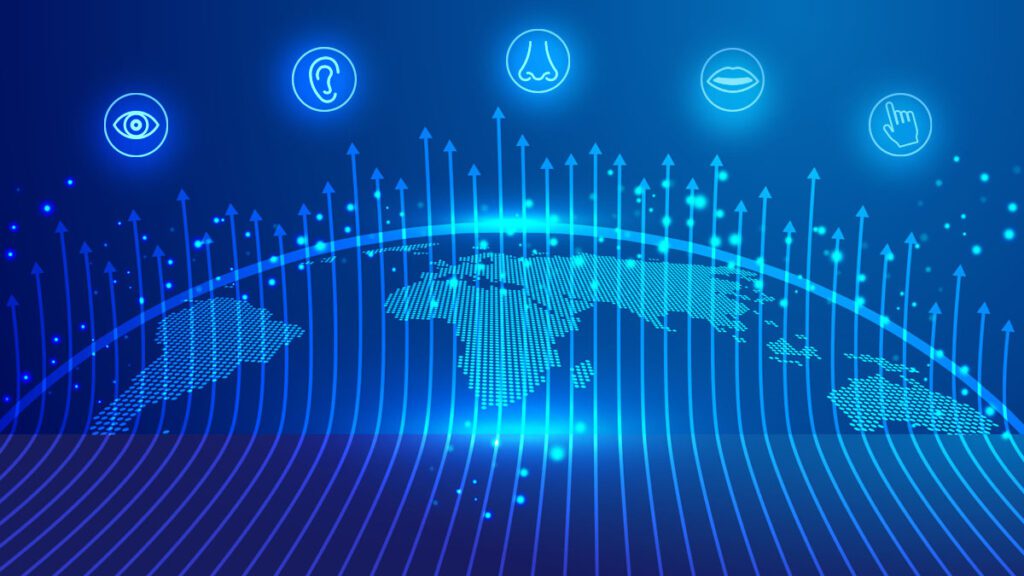
The world has been living under the charm of 5G for about three years now. Operators have been deploying and upgrading their networks, experimenting with different configurations, and bands to extract the maximum performance of the network. Concurrently, businesses have been trying the exploit the tiniest feature of the standard to generate new revenue streams.
Behind the curtains, work is well under way to shape up the next generation of wireless communications, 6G. While 5G provided the grounds for massive internet of things (IoT) deployments, 6G promises an immersive user experience, relying on advances in the extended reality, innovative technologies, and untapped bandwidth in the Terahertz spectrum. The maturity of technology will allow applications which we only characterize now as pure science fiction: digital twins, holographic communications and teleportation, and probably immersive metaverse applications.
The next iteration of the internet of things is already being developed as well. The trend is going from IoT to the internet of everything, all the way to exploring new avenues in terms of making the digital world as realistic as possible through the Internet of Senses (IoS).
Faking Your Senses?
The Internet of Senses has been a topic promoted by Ericsson for some time now as part of their vision for the telecom sector in 2030, which is the expected release date for the 6G standard. The idea behind it is not new as neuromodulation has been used extensively for various applications. Neuromodulation involves the intended alteration of a nerve activity through an electrical or chemical stimulus, as defined by the international neuromodulation society. Digital tasting applications and electronic noses have been developed to emulate typical physical tasting and smelling behavior.
IoS takes these concepts a notch further into a full ecosystem that includes taste, touch, smell, sight, sound, and mind as illustrated by Ericsson. The understanding of the sensory system from a neuroscientific perspective and the advances in electronics and microprocessor design to induce sensations that we are either missing or would like to have at some point. The different usages are the concretization of research ideas, that up to now, were only limited to concepts or theoretical ideas.
Mind Reading?
Brain computer interface is currently a technology that allows brain commands to be interpreted into specific actions. This technology is envisioned to encompass advanced prediction capabilities that will potentially allow an automated interpretation of what we are thinking and completing the task even before we issue a proper command for that. Other applications of “mind reading” including providing tailored content that reflect one’s needs or current status.
Digital Tasting and Aromas
The combination of digital tasting and aromas is another important use case for the IoS. The application virtually replicates a physical reality for which one is longing for. Imagine having a certain dish or drink in your mind. All you need is a stimulating device that would work on modulating a specific set of nerves that will provide you with the proper requested experience.
Improved Haptic Feedback
Touch is the last of the senses that will be triggered by the latest standard, Haptic feedbacks and other less known gimmicks are currently being used to provide immersive gaming experience to players around. The somatosensory receptors associated with touch are much more sensitive to distinct types of inputs. Future feedback system will have a higher degree of resolution providing a more elaborate response that will convey in a better way the perceived/intended senses.
Towards a Viable Metaverse?
The integration of the IoS with digital environments such as the Metaverse will make the virtual reality closer to the physical. In a sense, the Metaverse will move from being a product, to a place and finally to viable digital living space. Probably, your investment in a fancy Villa or some expensive piece of art will be worthy at some point in time.
Will Internet of Senses Become a Reality?
The answer is yes probably but only if. The realization an augmented somatosensory reality depends on many factors. Technological maturity is key step to the realization of the project. The IoS necessitates a significant evolution in computing platforms including extend reality systems, brain computer interfaces, processing units, among others. Artificial intelligence algorithms should scale to process and discriminate between increasingly complex datasets. The success of the approach is directly related to how much the developed system can mimic what is really happening in the nervous system. Tricking the body to accept digitally created senses will only work if the senses are the same to the actual ones. For instance, current digital tasting systems fail to recreate all kinds of taste notably, Umami.
As the use case is promoted to accompany the advent of 6G wireless systems, the transmission capabilities in terms of higher data rates, lower latencies, and dense edge computing availability will make IoS viable, from a telecom perspective at least.
The dangers come from the IoS solutions turning into a real social engineering experiment where the user is fooled by the system to provide sensitive data and information. As IoS relies heavily on sensitive biosignals, guaranteeing the security of the collected data is particularly important in the context of convincing users to adopt IoS solutions. Ethical AI and medical technology are therefore two topics that require a particular scrutiny.
Summary
The advent of 6G systems promises to bring a plethora of use cases that focus on providing users with an immersive experience. Among others, the Internet of Senses promises an augmented digital experience that will provide users with different perceivable senses that will get them closer to their normal physical life. Forseeable technological advancements provide the necessary ingredients for the project to be successful. However, several issues, notably security and data integrity, may prevent the widescale adoption of such systems.
“Inside Telecom provides you with an extensive list of content covering all aspects of the tech industry. Keep an eye on our Telecoms, 5G, and 6G news space to stay informed and up-to-date with our daily articles.”